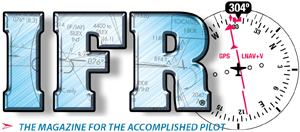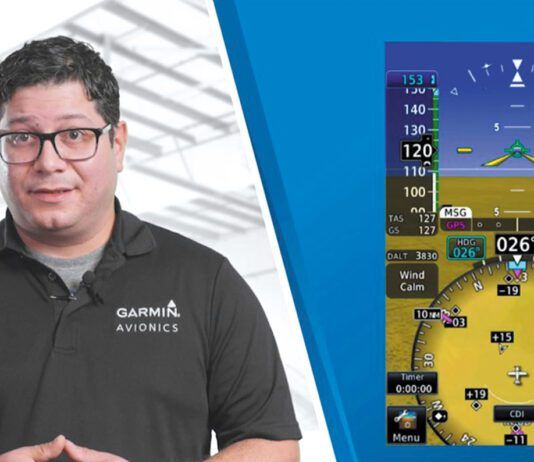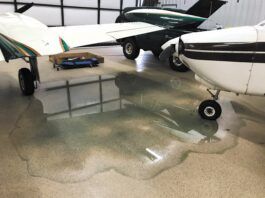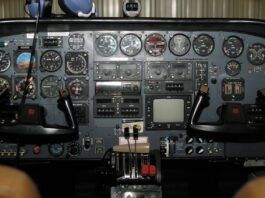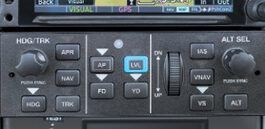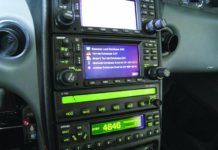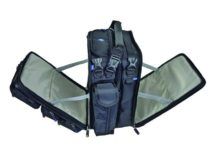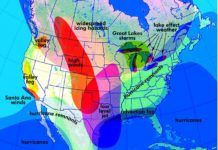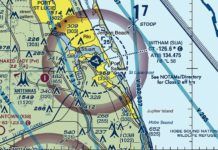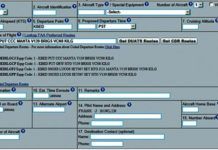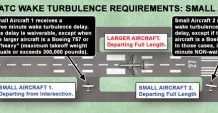Whats Functional When Obsolete?
There arent many legal absolutes about expired data. But will the boxes keep working as expected?Using Garmin as the benchmark, the navigator will continue to work with obsolete data. Flying GPS approaches with an expired navigator database is a legal no-no, but practically speaking, most boxes will let you do it. We wouldnt make a habit of it, but if that LPV is the approach you really need and youre willing to defend your actions under emergency authority, it can be done. Youll want to carefully check every waypoint on the GPS database against a current chart. You may want to double-check with ATC that you have any NOTAMs or changes for that approach as well.
Potpourri
This issue begins my third year at the helm of IFR-I survived the first two years without any airframe-threatening severe turbulence. But it hasnt been a smooth ride, either. Indeed, each month delivers at least some moderate chop.
Get Your Mask On
On September 5, 2014 the chairman of the TBM Owners and Pilots Association, Larry Glazer and his wife, Jane were on board a Socata TBM 900 single-engine turboprop that crashed into the ocean off the coast of Jamaica. According to the NTSB preliminary report, about an hour and a half into the flight from Rochester, New York to Naples, Florida, the pilot became unresponsive after reporting an indication that is not correct in the plane. The fighter jet pilots who escorted the aircraft to the Cuban airspace border suspected possible hypoxia.
Brightline Flight Bags
Whats the perfect flight bag for you? I can guarantee its different from mine. But each of us has many of the same storage requirements. Most of us have a headset or two and a tablet computer. We all have a flashlight, paper and pens. Some of us might carry a dedicated GPS or a handheld radio.
It’s Just a Timer
There were no GPS approaches when I learned instruments, so we timed everything. To do so, I purchased a simple Timex kitchen timer with direct entry via separate zero through nine buttons. Need to time 2:16? Push 2-1-6-start. I stopped using that trusty timer after a panel upgrade.
Briefing: December 2014
In October, Gulfstream announced it will add two new wide-cabin business jets to its line: the Gulfstream G500 and G600. The first G500 is already built, and taxied to the unveiling event in Savannah, Georgia. The company also revealed a 70-foot-long mockup of the G600, which it displayed a week later at the NBAA convention. Both jets carry up to 19 passengers in extra-wide cabins, and both can fly up to Mach 0.925, the same top speed as Gulfstreams G650 and G650ER. The cockpits feature active control sidesticks and touchscreen avionics. The G500 will start deliveries in 2018, with the G600 to follow a year later, the company said.
Radar Service Gotchas
An instrument-rated pilot called me a while back, seeking an IPC to prepare for a trip he wanted to make. Unfortunately, it had been nearly a year since hed flown at all.
Autumn Changes
Fall conjures memories of bright blue skies, cool mornings and generally good daytime flying. But in aviation, looks can be deceiving. New air masses are on the move, the jet stream begins to flex its muscle over much of the United States, fronts are marching southward, and theres likely a tropical storm in the Caribbean or the Gulf. How does this affect your flying and how can you avoid an unplanned turn of events?
A Watershed Event
On Thursday, December 28, 1978, a United Airlines DC-8 enroute from Denver, Colorado to Portland, Oregon, crashed 6.9 miles east-southeast of Portland International Airport.
Big Sky Theory
A beautiful VFR day in south Florida was coming to a close. The shadows of beach-front hotels were stretching across the sand 3500 feet below. For my first cross country after getting my private, my wife and I flew VFR from Miamis Opa Locka airport up to Stuart for some Mexican food-a $100 burrito run, so to speak. We were headed home along the coast.
Coded Departure Routes
Pilots want ways to mitigate bad weather. The Coded Departure Route (CDR) is one of the least-known such tools in GA, although its been available since 2007. The AIM tells us, CDRs provide air traffic control a rapid means to reroute departing aircraft when the filed route is constrained by either weather or congestion. So, if youd rather not wait, a CDR might be for you.
Putting the Pieces in Place
Control towers are team operations, like all other ATC facilities. Tower may ultimately control which aircraft takes off first, but its Ground that sets the stage. A solid ground controller monitors Towers traffic flow and puts each outbound aircraft in a position thats most advantageous for their departure. Theyre essentially playing high stakes chess with aircraft-shaped pieces.
